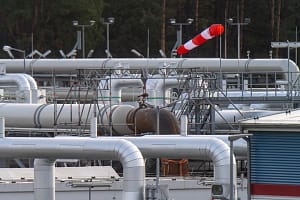In the current era we live in, the demand for energy is at an all-time high. We have almost used up all the fossil fuel found in the earth’s crust, such as crude oil and coal. The unfortunate bit is that fossil fuels are not renewable unless we are willing to wait hundreds of millions of years, which is what it took to form fossil fuels.
To supplement the dwindling fossil fuel supply, researchers have explored available alternatives in the form of biofuels. Biofuels, unlike fossil fuels, are a form of renewable energy, and are easy to replenish, as all that is needed is biomass. Biomass is material that generates biofuel and comes in the form of plant and animal material such as human and animal waste, wood from trees, agricultural residues, etc.
Types of biomass
In nature, anything left on the ground over time will eventually break down, releasing carbon dioxide and stored energy over time. When biomass is burnt, its stored energy is quickly released in a more useful manner. Combustion of biomass converts the stored energy into useful energy and mimics the natural process, but faster. Biomass is transformable into fuel or clean energy by various techniques that range from traditional burning processes to advanced biofuel technology.
Types of biomass include:
1. Agricultural residues
Crop residues include all sorts of agricultural waste such as straw, bagasse, stems, leaves, stalks, husks, pulp, shells, peels, etc. Significant crop residues are grossly underutilized, such as rice straws and hulls, which are produced at rice processing plants, and can be used to make energy. Today, farming practices either plow these agricultural residues into the soil, burn them, feed them to cattle, or leave them to decompose. Yet, they can be used to make liquid fuels or processed thermochemically for heat or electricity production.
2. Animal waste
Various animal wastes are suitable as sources of energy. The most common are poultry and animal manure, which was collected and sold as agriculture liquid fertilizer, or plowed back into agricultural land. The tight environmental control in water pollution and odor meant that farms had to have waste management controls in place, providing a good incentive for converting waste to energy.
The best conversion method for this waste is anaerobic digestion, which produces biogas used as an internal combustion fuel for cooking, home heating, or water heating or electricity generation via tiny gas turbines.
3. Forest residues
Forest residues come from operations within the forests such as clearing logging roads, plantation thinning, extraction of stem-wood for timber and pulp, or natural forest thinning. While harvesting, only 25 to 50% of the volume is removed, which leaves a residue on the site, useful for biomass energy generation.
4. Industrial wastes
In many industries, waste can be used as biomass to create energy. In the food industry, most by-products can be useful in generating energy such as scraps and peelings from fruits and vegetables, pulp and fiber from starch and sugar extraction, foods that do not meet the standard quality standards, coffee grounds, etc. This waste typically finds its way to landfill dumps.
Liquid waste comes from washing and blanching of fruits and vegetables, meat, pre-cooking meats, fish and poultry, and other processes. This wastewater contains starches, sugar, and other solid and dissolved matter. When this waste is anaerobically digested, it produces biogas or ferments to generate ethanol.
5. Solid waste and sewage
Household waste amounting to millions of tonnes is collected each year, with most of the waste disposal being in open fields. Solid waste can be converted into energy via direct combustion, or via natural anaerobic digestion in an engineered landfill. The gas produced at the landfill sites by naturally decomposing is approximately 50% methane and 50% carbon dioxide. The gas is collected and cleaned before being fed into gas turbines or internal combustion engines to generate power and heat.
Conclusion
Alternative fuel solutions are a necessity in today’s fast-paced world. Fuel is needed in all aspects of life, from homes to industries, and we have to find a sustainable renewable energy alternative. Biofuel needs biomass, which is located in various forms. As long as there are plant and animal waste, we shall always have an alternative fuel source.






Leave a Comment